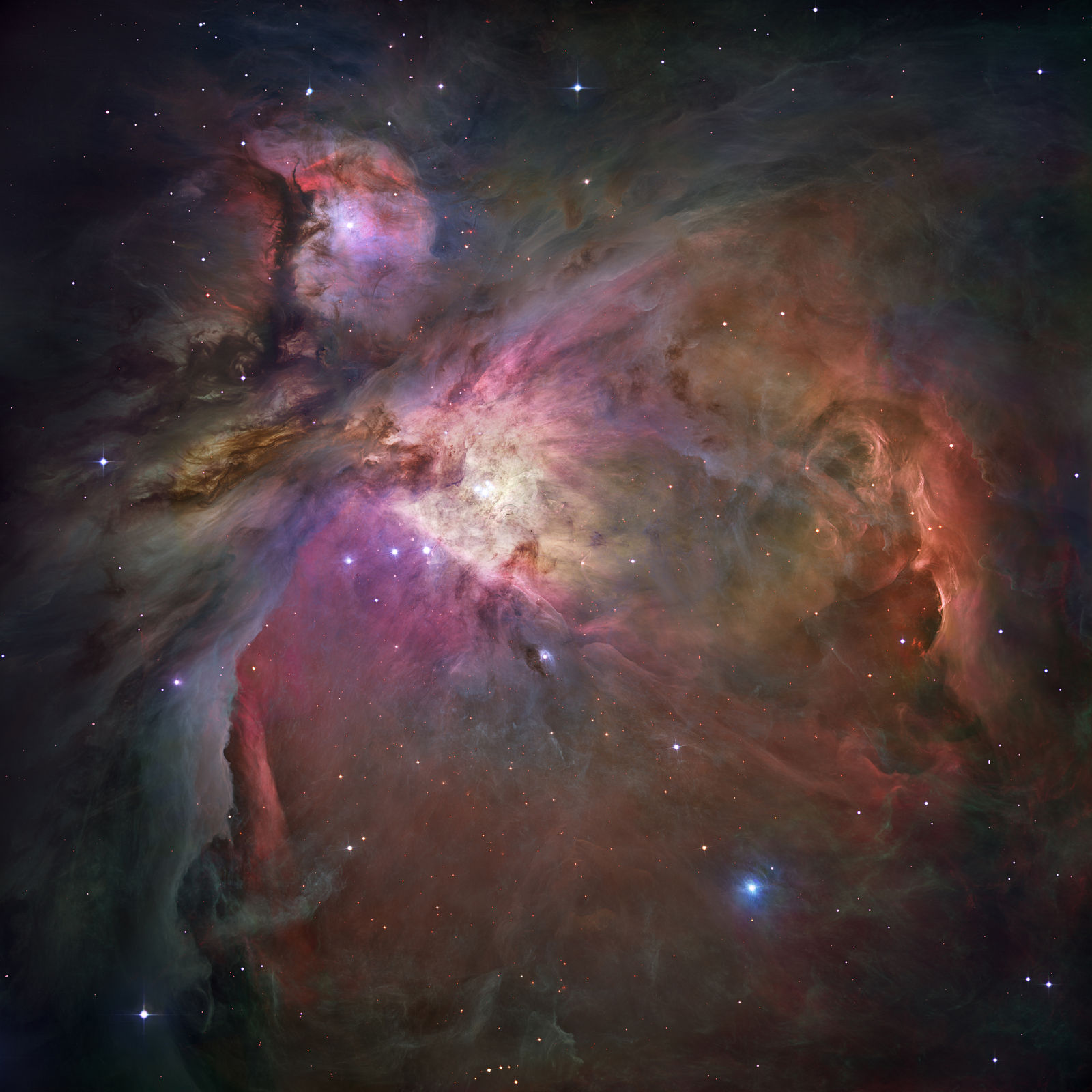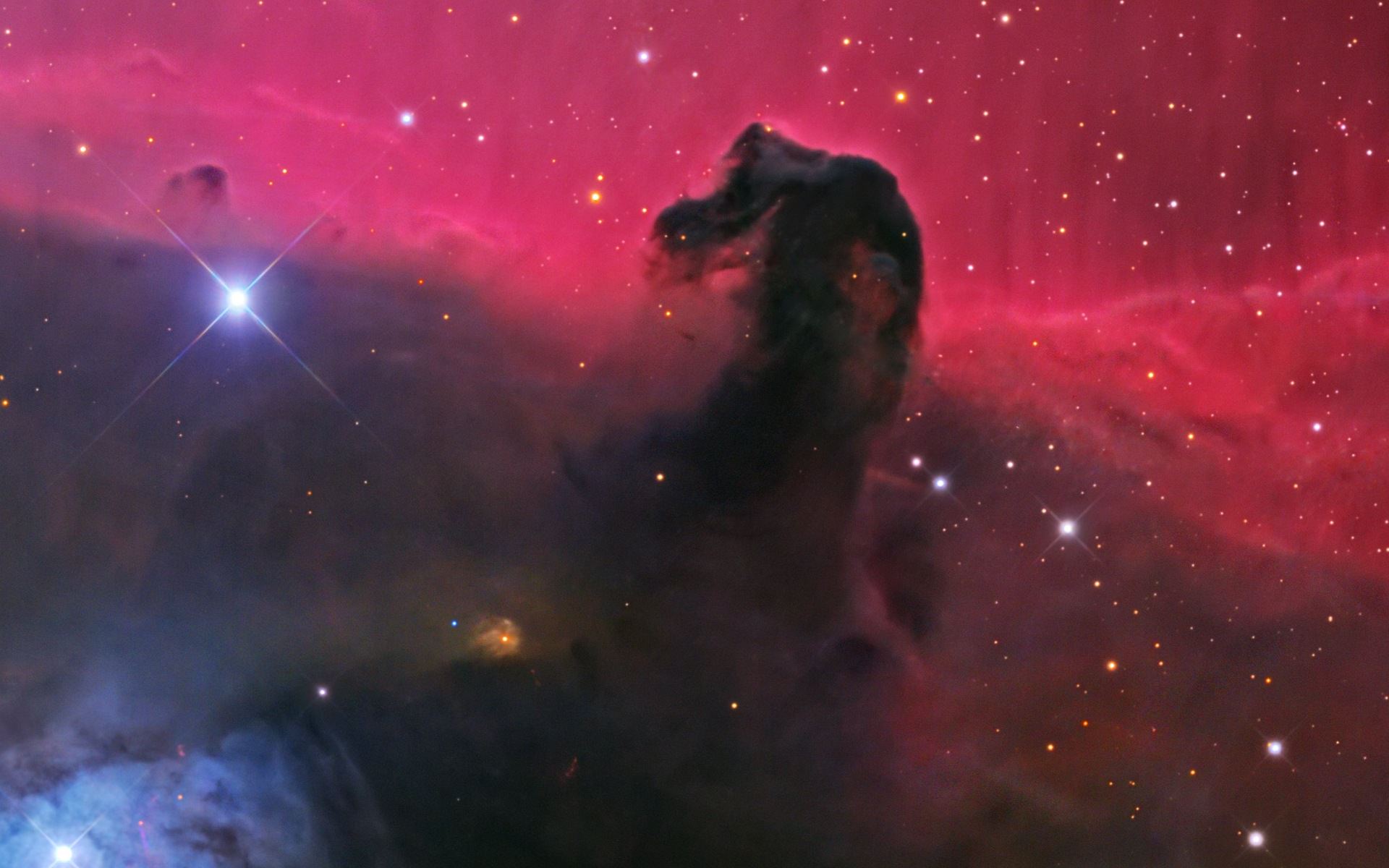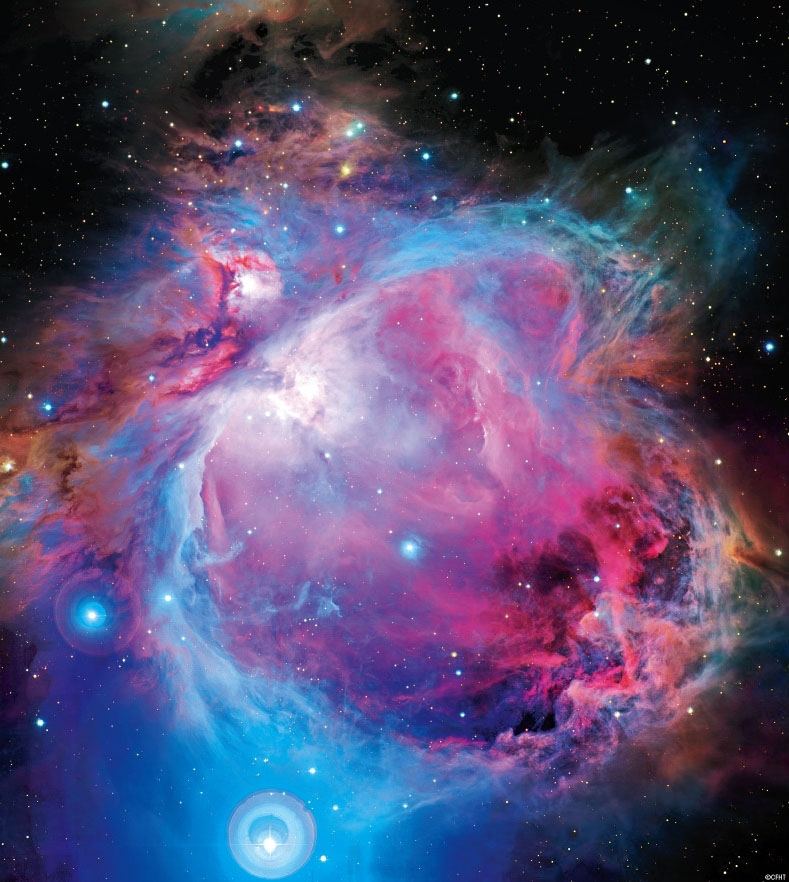
Orion Nebula taken at Magdalena Ridge Observatory Nebulosas, Nebulosa de orión, Materia oscura
The Trapezium or Orion Trapezium Cluster, also known by its Bayer designation of Theta1 Orionis (θ 1 Orionis), is a tight open cluster of stars in the heart of the Orion Nebula, in the constellation of Orion. It was discovered by Galileo Galilei.

black hole Nebula, Orion nebula, Astrophotography
The presence of a black hole within the cluster could explain the observed high velocities of the Trapezium stars. The Orion Nebula's distance of some 1,500 light-years would make it one of the closest known black holes to planet Earth. Tomorrow's picture: snow day <.

The Nearby and Orion Nebula Is Held Together by a Black Hole
Black Holes Stars Exploration MORE News | January 6, 2023 Discovering the Universe Through the Constellation Orion Do you ever look up at the night sky and get lost in the stars? Maybe while you're stargazing you spot some of your favorite constellations. But did you know there's more to constellations than meets the eye?

The nebulae shown here comprise Orion's sword in the constellation of Orion (left is north in
The Orion Nebula, also known as Messier 42 (or M42 for short), is the nearest star-forming region to Earth, located approximately 1,350 light-years away and is about 2 million years old.

Orion's Arm Encyclopedia Galactica Black Hole
A black hole in the Orion Nebula? Posted by Deborah Byrd November 5, 2012 Image of the central region of the Orion Nebula via NASA/ JPL-Caltech/ STScI. One of the most recognized.

M42 The Orion Nebula r/astrophotography
Overview image of the Orion Nebula with the star cluster at its centre. The possible black hole would reside somewhere between the four bright stars which mark the centre of the star cluster.

M42 Orion Nebula in Narrowband SHO (Hubble Palette) astrophotography Orion nebula, Nebula
The Orion Nebula Cluster might be home to a black hole more than 100 times the mass of the Sun, according to a recent simulation. At 1,300 light-years away, that would make it the closest known black hole to Earth. Most of space is empty. Even when galaxies collide, individual stars are far more likely to exchange passing glances than meet head-on.

M42 The Great Orion Nebula HDR Orion nebula, Nebula, Orion
The Orion Nebula is a picture book of star formation, allowing astronomers to study stars of all types and sizes in one location. More than 3,000 stars appear in this image alone. (Also available in Spanish.) Related Press Release: Hubble Panoramic View of Orion Nebula Reveals Thousands of Stars Keywords Emission Nebulas Star Forming Regions Stars

Messier 42 The Orion Nebula Renfrewshire Astronomical Society
The Orion Nebula Cluster (ONC, M42) is a dense star cluster that is part of a complex star-forming region at a distance of about 400 pc (Jeffries 2007; Sandstrom et al. 2007; Menten et al. 2007). Due to its relative proximity, the ONC is one of the best observationally studied star clusters.. Having a black hole mass of ≈10.

M42 The Orion Nebula (With images) Orion nebula, Nebula, Orion
The Orion Nebula (also known as Messier 42, M42, or NGC 1976) is a diffuse nebula situated in the Milky Way, being south of Orion's Belt in the constellation of Orion, [b] and is known as the middle "star" in the "sword" of Orion. It is one of the brightest nebulae and is visible to the naked eye in the night sky with apparent magnitude 4.0.

black holes in the milky way in 2020 Nebula, Hubble pictures, Orion nebula
Astronomy Tagged as Using sophisticated computer modeling programs, astrophysicists have shed light on the long-standing mystery of the binding force behind a cluster of unruly and rapidly swirling stars located in the famous Orion Nebula Cluster, also known as Messier 42 (M42).

A black hole in the Orion Nebula Space EarthSky
Zoom-in on the Orion Nebula. This video starts with a ground-based image of the night sky, taken by Akira Fujii, zooms on the star formation region of the Orion Nebula — observed by Martin Kornmesser — and ends with a detailed view of the nebula as seen by Hubble. Credit: ESA/Hubble, A. Fujii, M. Kornmesser.

Pin on Universe Galaxy and Stars
Black Hole at the Center of Orion? / FromQuarkstoQuasars The Orion Nebula (M42), Image Credit: NASA/Hubble The Orion Molecular Cloud Complex has always been a source of intrigue for.

Data Reveals That the Orion Nebula Cluster is a Mix of Two Clusters
International study suggests a massive black hole exists in the Sword of Orion Overview image of the Orion Nebula with the star cluster at its centre. The possible black hole would reside somewhere between the four bright stars which mark the centre of the star cluster.

M42 The Great Orion Nebula in 2020 Nebula, Orion nebula, Orion
The Orion Nebula is 1,500 light-years away, the nearest star-forming region to Earth. Astronomers used 520 Hubble images, taken in five colours, to make this picture. They also added ground-based photos to fill out the nebula. The ACS mosaic covers approximately the apparent angular size of the full moon.

Untitled Document Orion nebula, Nebula, Orion
It really is a dark hole in the nebula, and not a secret star forming region at all. V380 Orionis is the brightest star in the region of NGC 1999 - it's actually the brightest member of a.